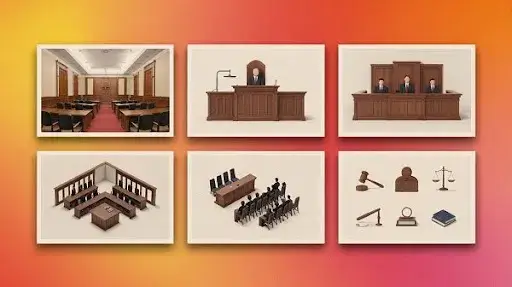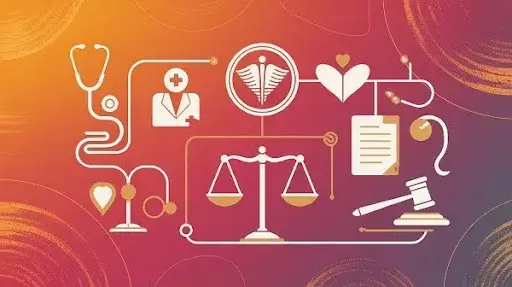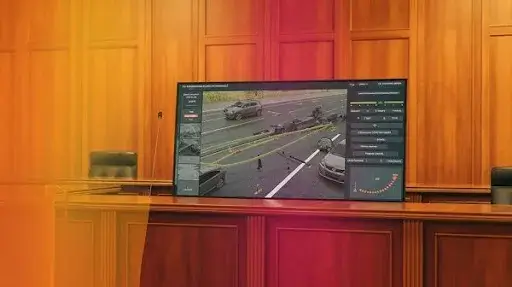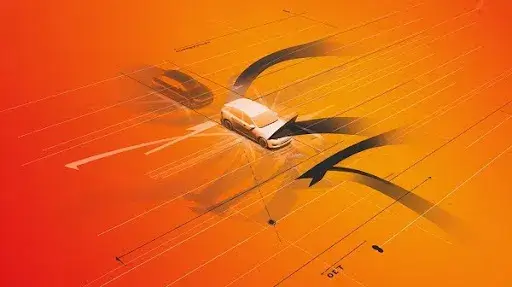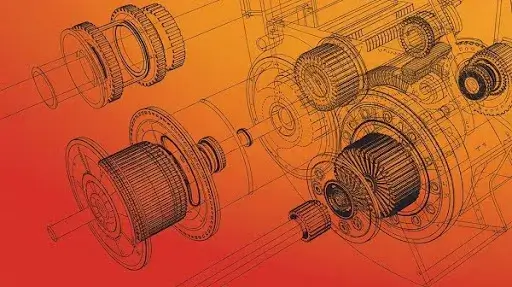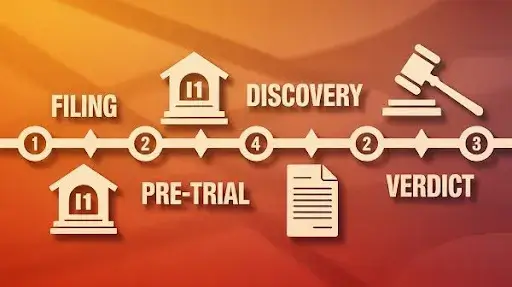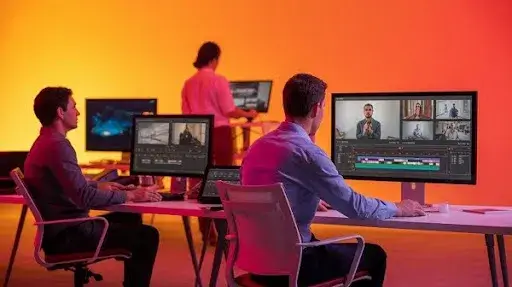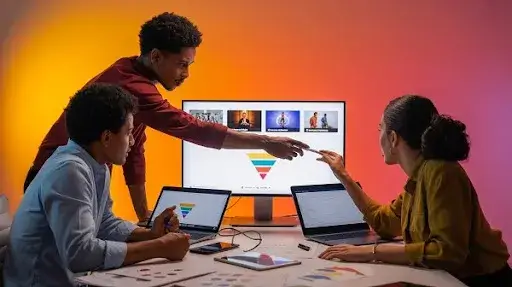A courtroom isn’t just a space for facts and evidence; it’s a stage for persuasion. The side that explains things clearly usually wins, no matter how complex the case may be. When long testimonies drag on and the language gets heavy, attention slips away.
That’s where courtroom graphics change the game. They turn technical arguments into something you can see and grasp right away.
These visuals do more than support a presentation. They shape how jurors remember details, how a judge follows your reasoning, and how your client’s version of events stays vivid in everyone’s mind. The real aim isn’t decoration; it’s clarity.
At Prolific Studio, we’ve watched the mood in a courtroom shift the moment a strong visual appears. When jurors can see the incident, the data, and the timeline of events, understanding follows naturally, and so does persuasion.
So, what kind of visuals actually make a difference during a trial? Below are the most used types of courtroom graphics that help attorneys explain their case in a way people don’t forget.
What Are Courtroom Graphics?
Courtroom graphics are visuals designed to make legal arguments easier to follow. They might be charts, diagrams, animations, or illustrations, anything that helps clarify evidence.
You’ll also hear them called trial graphics, litigation graphics, or legal case graphics. Each serves one purpose: to make the jury understand what happened and why it matters.
These visuals can show how an accident occurred, how a medical error unfolded, or how a product malfunctioned. They help bridge the gap between technical language and ordinary understanding.
Courtroom visuals often come from legal graphics animation services. That includes motion-based work like trial animation or forensic animation, which brings static information to life. Together, these tools tell a story in a way that’s simple, accurate, and impossible to ignore.
Used the right way, they don’t just support a case, they shape it. Jurors remember what they see more than what they hear, and that can tilt understanding in your client’s favor.
The Role of Visual Storytelling in Litigation
Legal cases depend on logic, but jurors process the world visually. When they can see what happened, they absorb it faster and retain it longer. That’s why visual storytelling in litigation has become so important.
Studies show jurors recall up to 60–65% more information when visuals accompany verbal testimony. Images and motion activate emotional memory, the part of the brain that helps people connect with what they’re seeing.
Attorneys use demonstrative evidence graphics for that exact reason. Instead of reading through a long medical report, a diagram of an injury tells the same story in seconds. It’s not just easier, it’s more persuasive.
When you look closely, courtroom graphics aren’t art pieces. They’re strategies in visual logic. Each element, the scale, color, and layout, is chosen to help the jury stay on track and remember what truly matters.
The Most Used Types of Courtroom Graphics
Every case has its own challenges, and not all visuals work for every scenario. Still, a few kinds of graphics show up again and again in trial presentations because they simply work. These are the types lawyers rely on to improve jury comprehension with graphics and keep their story clear.
1. Medical Legal Graphics
Medical legal graphics are vital in personal injury and medical malpractice trials. Since most jurors don’t have medical training, it’s hard for them to imagine what’s happening inside the body based only on testimony.
These visuals fill that gap. They might show how a spine was fractured, where a surgical error occurred, or how an organ was affected. When jurors can see the injury, empathy follows.
A single, well-made diagram can replace hours of technical explanation. It also strengthens the credibility of your medical expert by illustrating their point in a way anyone can grasp.
At Prolific Studio, we work with doctors and certified medical illustrators to create these graphics with accuracy and respect for anatomy. The goal is to turn dense medical data into something that makes sense to everyone in the room.
2. Forensic Graphics and Trial Animation
When the sequence of events matters, forensic graphics and trial animation are often the deciding factors in how a case is understood.
These visuals are typically based on verified evidence, security footage, measurements, witness accounts, or police data. They reconstruct events step by step, showing exactly how something unfolded.
In an assault case, for example, a forensic animation might replicate the movements of both parties using actual spatial data. In a collision case, it can trace car speeds, impact points, and visibility angles.
Still images from these animations, known as demonstrative evidence graphics, freeze crucial moments for closer inspection. They make it easier for jurors to see the timeline of cause and effect.
The beauty of courtroom visuals like these lies in their precision. They rely on facts, not speculation, which makes them highly credible. When jurors see an event backed by measurable data, the narrative becomes difficult to dispute.
3. Accident Recreation Graphics
In cases involving traffic or industrial accidents, descriptions alone often create confusion. Terms like “side impact” or “rear-end collision” mean different things to different people. That’s why accident recreation graphics are so effective.
These visuals show the exact positions of vehicles, their directions, and the sequence leading up to the collision. They strip away assumptions and replace them with a clear visual timeline.
Attorneys use them to explain speed, impact force, and the driver’s reaction time. Jurors can immediately see how the crash happened and why it couldn’t have been avoided.
They’re not limited to cars. Aviation and factory accidents also use similar visuals to map out moving parts, equipment failures, and chain reactions. It’s an instant way to make complicated sequences easy to grasp.
That’s the real benefit of courtroom visuals: they make complex events transparent. Jurors don’t have to imagine what happened; they can see it for themselves.
4. Mechanical Diagram Graphics
Mechanical diagrams simplify engineering-level problems into visual logic that anyone can follow. These are especially common in product liability cases.
A graphic might display how a machine operates, pinpointing the component that failed. Think of a car’s steering system, a manufacturing tool, or a defective appliance. Instead of explaining each part verbally, the visual lays it all out.
Jurors don’t need an engineering background to understand how the failure happened. The legal case graphic does the explaining for them. It also reinforces what your expert witness says, giving their testimony a visual backbone.
At Prolific Studio, our designers create custom courtroom graphics solutions with real engineering data behind them. Every diagram is drawn from blueprints, mechanical schematics, and failure reports, ensuring that the visual can stand up under scrutiny.
5. Timeline Graphics
Some trials stretch on for years, filled with medical treatments, emails, and meetings that all blend together. A timeline graphic organizes that mess into a straight, readable line.
These visuals show key events in order: when the injury occurred, when treatment started, when errors were made, and when outcomes appeared. The jury can track the cause and effect without flipping through piles of documents.
Timelines are especially powerful in medical negligence and corporate litigation cases. They remind everyone of what happened first and what followed after, keeping the story consistent.
It’s not just about memory. A clear visual timeline builds trust. Jurors can literally see how events connect, which makes your case easier to follow and harder to challenge.
The Emotional Edge of Trial Graphics
Humans connect with visuals emotionally. A well-timed animation or diagram doesn’t just inform; it creates empathy.
When jurors see a crash, a failed surgery, or a faulty product play out visually, they experience the story, not just hear it. That emotional engagement often turns into stronger recall and stronger verdicts.
The goal isn’t manipulation. It’s about giving the jury the clearest, fairest view possible. That’s how graphics that persuade jurors work, through accuracy, clarity, and human connection.
When Courtroom Graphics Strengthen Your Case
No matter how skilled an attorney is, communication can fall apart when the evidence is too technical or scattered. Courtroom visuals fix that gap. They work like a translator between the expert and the jury.
When a juror can see what happened, your argument gains structure. The facts no longer sound abstract; they become part of a story with a clear beginning, middle, and end.
Many attorneys describe courtroom graphics as the moment their argument “clicks.” Instead of relying on imagination, jurors can visualize the exact mechanism, movement, or timeline being explained. That sense of clarity isn’t just helpful; it’s persuasive at a subconscious level.
At Prolific Studio, we’ve seen this firsthand. A well-constructed visual can stop confusion in its tracks and help the jury understand a case from your client’s point of view. When every piece of evidence lines up visually, the case feels coherent, and coherence builds trust.
The Strategic Purpose Behind Every Visual
A courtroom graphic might look simple, but each one is the product of planning and precision. Legal graphics animation services don’t just create “pretty pictures.” They work backwards from the key argument: what do you want the jury to remember most?
If the point is to prove a product malfunctioned, the animation might zoom in on the defective component. If the point is medical negligence, the diagram might show the correct versus the incorrect surgical process. Every element supports one clear idea, cause and consequence.
This is what makes demonstrative evidence graphics so powerful. They’re not the evidence itself but tools that demonstrate the evidence. Used correctly, they turn abstract statements into observable truths.
And since courtroom visuals are grounded in verified data, like measurements, timestamps, or expert testimony, they hold up under questioning. They give your case visual integrity.
Why Visual Learning Dominates Courtrooms
A large part of persuasion lies in how people absorb information. Psychologists estimate that over 80% of human learning happens visually. In a courtroom setting, that fact matters.
When jurors listen for hours, their focus naturally dips. But the moment a visual appears, their attention resets. It’s not just engagement; it’s retention. People are wired to process images faster than text or speech.
That’s why the best trial graphics don’t just “support” the presentation; they become part of the argument itself. They turn the courtroom into an interactive learning space where everyone, from the judge to the jury, stays on the same page.
Attorneys who use this approach don’t just present facts; they teach. And when jurors learn your side of the story instead of just hearing it, the odds move in your favor.
How Custom Graphics Reflect Credibility
In the digital era, off-the-shelf visuals no longer cut it. Jurors can sense when something feels generic. That’s why custom-built courtroom visuals add a layer of professionalism that generic templates can’t replicate.
When visuals are clearly designed for a specific case, with accurate colors, realistic scales, and authentic data, they convey diligence and credibility. Jurors subconsciously associate visual precision with factual accuracy.
At Prolific Studio, this attention to detail defines our legal graphics animation services. Every visual is grounded in technical accuracy, reviewed by subject experts, and designed for clarity. The end goal is not just comprehension but confidence, the kind of confidence that builds in the jury box when the evidence looks irrefutable.
The Collaborative Process Behind Legal Graphics
Strong trial graphics come from collaboration. Attorneys bring the legal expertise; designers bring visual strategy. Together, they refine the story until every frame supports the argument.
The process usually starts with discovery material, witness statements, reports, and technical data. From there, illustrators and animators work closely with legal teams to identify moments that need visual support.
Sometimes that’s a mechanical breakdown; sometimes it’s a simple chart showing financial loss. Either way, the goal is to make the invisible visible. Every scene is designed to educate without bias, because clarity itself is persuasive.
Courtroom visuals aren’t just design projects. They’re storytelling tools built under the same scrutiny as the trial itself. Each frame must withstand questions, challenges, and expert cross-examination.
Choosing the Right Visual for the Right Case
Not every graphic fits every argument. Selecting the right visual type is half the strategy.
- Use medical legal graphics when physical injury or medical error is central to the case.
- Rely on forensic graphics or trial animation when timing, sequence, or motion is critical to understanding.
- Bring in mechanical diagrams for product failures or engineering-based evidence.
- Add timelines when multiple events overlap and need chronological clarity.
Combining these elements creates a layered narrative, a story that jurors can follow visually even when testimony gets complex.
The right visual can do what hundreds of words can’t: it gives the courtroom a shared point of focus.
Frequently Asked Questions
What are courtroom graphics used for?
Courtroom graphics are used to simplify complex legal evidence. They help jurors and judges understand events, data, or technical information that might otherwise be confusing.
Are courtroom visuals admissible as evidence?
Most of the time, they are considered demonstrative evidence graphics, tools that explain or illustrate evidence rather than being evidence themselves. Their admissibility often depends on accuracy and the source of information.
Why do attorneys use legal graphics animation services?
Because animated or visualized evidence can make testimony clearer and more memorable. It ensures the jury understands the point exactly as the attorney intends, without misinterpretation.
Can courtroom visuals influence the verdict?
They can influence comprehension, and comprehension often shapes decision-making. When jurors clearly understand cause, sequence, and consequence, they’re more confident in their conclusions.
What makes Prolific Studio different from other trial graphics providers?
Prolific Studio combines design precision with technical and legal understanding. Our visuals aren’t just designed to look accurate; they are accurate, verified by experts, and crafted to hold up under scrutiny.
Final Words
Courtroom graphics aren’t just accessories to an argument; they’re extensions of it. In a world where attention is scarce and complexity is high, visuals bring order, focus, and credibility.
They allow jurors to experience a case rather than just observe it, and that difference often determines how a story is remembered. From medical legal graphics to detailed forensic animations, every visual has the same mission: to make truth visible.
At Prolific Studio, our legal graphics animation services are built around that belief. We transform complex evidence into courtroom visuals that teach, clarify, and persuade. Because in the end, the strongest story isn’t the one told the loudest, it’s the one everyone can see.
Related Articles:

